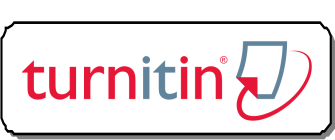Manajemen Personalia Lembaga Pendidikan: MA Darul Ihsan Samarinda dan SMA YPM Diponogoro Tenggarong Seberang
Abstract
In its development, madrasas experienced ups and downs in their development. The most basic problem is the management aspect. The following cases of management are interesting to note. There are schools or madrasas that initially experience setbacks, then can progress rapidly. On the other hand, there are schools or madrassas that initially developed, but then almost went out of business. One of the reasons is due to the management that is not mature enough, therefore personnel management in the world of education is very important especially in educational institutions especially Islamic-based educational institutions. This study aims to determine the application of personnel management in Islamic education institutions and supporting and inhibiting factors in its application. This research is a type of field research with a multi-case study research approach. Data collection methods used Participatory Observation and In-depth interviews. The steps of data analysis in this study use the analysis of the Miles and Huberman models. Based on the results of research in the field it was found that: 1) The implementation of personnel management in MA Darul Ihsan Samarinda and YPM Diponegoro Tenggarong Seberang High School which consisted of educators and education staff. There are several components of personnel management, including seven components that have different divisions and elements, namely planning, recruitment, coaching, dismissal, but there are three important components that have not been comprehensively applied, namely compensation, appointment and evaluation. 2) Supporting factors for the implementation of personnel management in MA Darul Ihsan Samarinda and YPM Diponegoro Tenggarong Seberang High School are the motivation given by the madrasa headmaster and headmaster to their personnel so that they always try to be better and give encouragement or enthusiasm in carrying out their tasks. Both vision, mission, goals because each institution must have a vision, mission and goals as well as MA Darul Ihsan Samarinda and YPM Diponegoro Tenggarong High School have a vision, mission and clear objectives, while the inhibiting factor in the implementation of personnel administration is a means of implementing administration in MA Darul Ihsan Samarinda and YPM Diponegoro Tenggarong Seberang High School due to the unavailability of sufficient funds and human resources in their fields.References
Qomar, Mujamil, Manajemen Pendidikan Islam: Strategi Baru Pengelolaan Lembaga Pendidikan Islam, Jakarta : Erlangga, 2007.
Manullang, Marihot, Manajemen Personalia, Yogyakarta: Gajah Mada University Press, 2006.
Sagala, Syaiful, Manajemen Strategik dalam Peningkatan Mutu Pendidikan, Bandung: Alfabeta, 2010.
Riyanto, Yatim, Metodologi Penelitian Pendidikan, Surabaya: SIC, 2001.
Arikunto, Suharsimi, Prosedur Penelitian Suatu Pendekatan Praktik (Edisi Revisi VI), Jakarta: PT.Rineka Cipta, 2006.
Please find the rights and licenses in SYAMIL Jurnal Pendidikan Agama Islam (Journal of Islamic Education). By submitting the article/manuscript of the article, the author(s) agree with this policy. No specific document sign-off is required.
1. License
The non-commercial use of the article will be governed by the Creative Commons Attribution license as currently displayed on Creative Commons Attribution-ShareAlike 4.0 International License.
2. Author(s)' Warranties
The author warrants that the article is original, written by stated author(s), has not been published before, contains no unlawful statements, does not infringe the rights of others, is subject to copyright that is vested exclusively in the author and free of any third party rights, and that any necessary written permissions to quote from other sources have been obtained by the author(s).
3. User/Public Rights
SYAMIL spirit is to disseminate articles published are as free as possible. Under the Creative Commons license, SYAMIL permits users to copy, distribute, display, and perform the work for non-commercial purposes only. Users will also need to attribute authors and Register on distributing works in the journal and other media of publications. Unless otherwise stated, the authors are public entities as soon as their articles got published.
4. Rights of Authors
Authors retain all their rights to the published works, such as (but not limited to) the following rights;
Copyright and other proprietary rights relating to the article, such as patent rights,
The right to use the substance of the article in own future works, including lectures and books,
The right to reproduce the article for own purposes,
The right to self-archive the article (please read out deposit policy),
The right to enter into separate, additional contractual arrangements for the non-exclusive distribution of the article's published version (e.g., post it to an institutional repository or publish it in a book), with an acknowledgment of its initial publication in this journal (SYAMIL Jurnal Pendidikan Agama Islam (Journal of Islamic Education)).
5. Co-Authorship
If the article was jointly prepared by more than one author, any authors submitting the manuscript warrants that he/she has been authorized by all co-authors to be agreed on this copyright and license notice (agreement) on their behalf, and agrees to inform his/her co-authors of the terms of this policy. SYAMIL will not be held liable for anything that may arise due to the author(s) internal dispute. SYAMIL will only communicate with the corresponding author.
6. Royalties
Being an open accessed journal and disseminating articles for free under the Creative Commons license term mentioned, author(s) aware that SYAMIL entitles the author(s) to no royalties or other fees.
7. Miscellaneous
SYAMIL will publish the article (or have it published) in the journal if the article’s editorial process is successfully completed. SYAMIL editors may modify the article to a style of punctuation, spelling, capitalization, referencing and usage that deems appropriate. The author acknowledges that the article may be published so that it will be publicly accessible and such access will be free of charge for the readers as mentioned in point 3.












